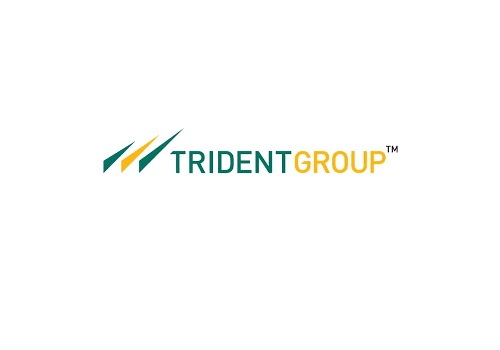Buy Coromandel International Ltd For Target Rs.1,030 - Motilal Oswal

Release of subsidies to aid CFO generation
In this note, we have analyzed volume growth for Coromandel International (CRIN) and the Fertilizer industry in FY21. Moreover, we have looked at the market share trend, the release of subsidies, price hikes for DAP/NPKS, and volume performance in 4QFY21. Here are the key insights:
CRIN’s FY21 volume growth stays ahead of industry
* Overall Fertilizer industry volumes grew 8% YoY in FY21 on the back of 19% volume growth in MOP; NPKS and SSP volumes grew 17% each for FY21. Urea, which accounted for 53% of the Fertilizer industry’s volumes, was up by 5% YoY in FY21 (refer to Exhibit 1).
* CRIN’s overall fertilizer volumes grew 11% YoY in FY21 on the back of 35%/20%/16% volume growth in urea/MOP/SSP. NPKS volumes were up 8%, while DAP volumes came in flat.
* CRIN leads the market in the NPKS Fertilizer segment and commands market share of 23.1% (FY21). For CRIN, NPKS formed 58% of overall volumes in FY21 – NPKS grew 8% v/s industry sales volume growth of 17%. Thus, CRIN lost 191bp market share in FY21.
* The top six states, which cumulatively account for 97% of CRIN’s NPKS volumes, are Andhra Pradesh (33%), Telangana (29%), Karnataka (12%), Maharashtra (11%), West Bengal (8%), and Odisha (4%). Maharashtra –the largest consumer of NPKS in India – accounts for 23% of India’s NPKS consumption. NPKS industry volumes in Maharashtra were up 35%, whereas CRIN’s sales in the state were largely in-line (-2%). Thus, strong NPKS volume growth in states wherein CRIN does not have a significant presence has impacted the company’s overall market share.
* Other key states where CRIN has underperformed the industry include Karnataka (industry growth: 20% v/s CRIN: 7%), Telangana (16% v/s 7%), and Odisha (-15% v/s -20%). In Andhra Pradesh, CRIN has outperformed the NPKS industry (up 13%) with 16% growth.
* Additionally, inventory for the industry/CRIN as of Mar’21 stood 45%/48% lower vis-à-vis the last five years. This should bode well in terms of volumes in the upcoming kharif season (refer to Exhibits 4 & 5).
NPKS/DAP/Urea drags volume growth in 4QFY21
* CRIN’s overall volumes in 3QFY21 grew 19% YoY, driven by 118% YoY growth in trading volumes. On the other hand, manufacturing volumes de-grew 3% YoY. Total phosphatic fertilizer volumes were up 8% YoY; growth was seen despite a strong increase of 29% in the base quarter.
* However, as per data from the Ministry of Fertilizers, CRIN’s overall volumes de-grew 7% in 4QFY21. Total phosphatic fertilizer volumes de-grew 14% YoY (NPKS de-grew 8% YoY), whereas urea/MOP declined 32%/22%. Only SSP witnessed volume growth of 68% during the quarter. CRIN’s manufacturing volumes declined 10% YoY, whereas trading volumes grew 9% YoY in 4Q.
* Phos acid, which is a key RM for the industry/CRIN, has been increasing since 4QFY20 – when it stood at USD590/mt – and was contracted at USD795/mt in 4QFY21 (+35% YoY and +15% QoQ). Middle East Ammonia price in 4QFY21 stood at USD330/mt (+29% YoY / +22% QoQ).
* Our channel checks suggest that due to an increase in RM cost, fertilizer companies have announced price hikes of 30–40% in DAP/NPKS fertilizer. However, these are likely to be implemented from May.
* As per our channel checks, CRIN has taken adequate price hikes for DAP/NPKS in certain states and would take hikes in the remaining states in the current or coming months.
Release of subsidies to improve WC cycle
* In Nov’20, the government announced an additional fertilizer subsidy of INR626b over and above the budgeted amount of INR713b. The additional allocation was put toward clearing the old dues of the fertilizer companies, thereby reducing their working capital requirements.
* In 10MFY21, the Fertilizer industry received a subsidy of INR1,016b (of which 74% was put toward urea and the balance toward P&K). In Jan’21, the industry received a subsidy of INR256b (of which 67% was put toward urea and the balance toward P&K) – this accounts for 25% of the total subsidy received by the industry over 10MFY21.
* CRIN’s subsidy outstanding as of Dec’20 stood at INR28.5b (v/s INR16.7b YoY). The company received a record-high subsidy of INR13.5b in Jan’21; thus, 47% of the outstanding subsidy as of Dec’20 had already been paid by Jan’21.
* In 9MFY21, the subsidy received stood at INR20.9b (v/s INR33.2b in 9MFY20); in Jan’21, CRIN received a subsidy of INR13.5b – this forms 65% of the subsidy received by CRIN in 9MFY21.
* We estimate CRIN’s subsidy receivables as of FY21 to reduce substantially to INR8b v/s INR23.2b last year. Thus, CRIN is likely to generate CFO/FCF of INR41.3b/39.9b in FY21.
Valuation and view
* We believe key levers would drive growth for CRIN going forward, including: (i) focusing on increasing penetration in existing markets, (ii) debottlenecking to increase capacity, (iii) undertaking efforts to lower RM cost (rock), while maintaining the same level of quality, and establish an alternative sourcing destination (which would aid in cost savings), (iv) launching 3–4 molecules in the Crop Protection segment, (v) exploring inorganic growth opportunities, and (vi) focusing on profitable growth in the Retail business by reorganizing retail stores depending on the consumption pattern.
* The structural story remains intact with regard to increasing farmers’ awareness about having balanced nutrients in crops. This is likely to aid the shift from urea to complex fertilizers; thus, CRIN stands to be a key beneficiary.
* Additionally, the company is likely to generate CFO of INR41.3b in FY21, aided by the release of subsidies by the government. Thus, the company’s capex plan would be a key monitorable, in our view.
* We expect a revenue/EBITDA/PAT CAGR of 8%/10%/13% over FY21–23E. We value CRIN at 17x FY23E EPS to arrive at TP of INR1,030. Maintain Buy.
To Read Complete Report & Disclaimer Click Here
For More Motilal Oswal Securities Ltd Disclaimer http://www.motilaloswal.com/MOSLdisclaimer/disclaimer.html SEBI Registration number is INH000000412
Above views are of the author and not of the website kindly read disclaimer

















